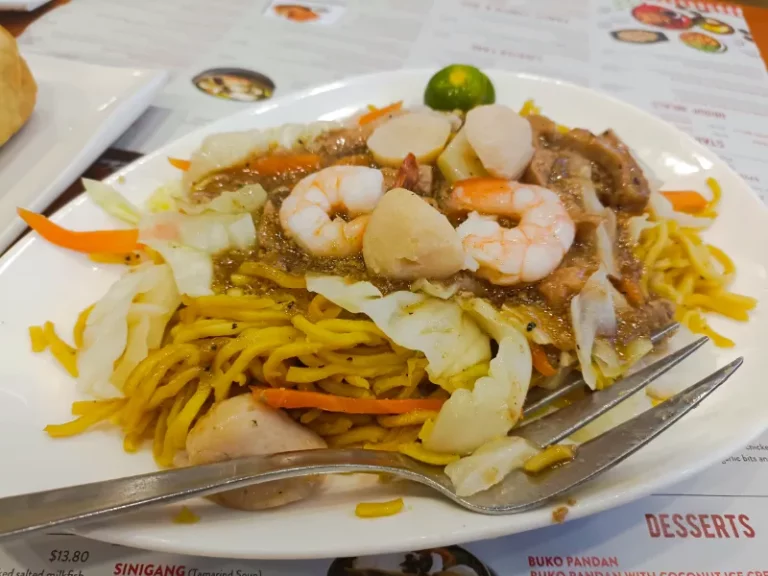Max's Restaurant Far East Plaza
Max’s Restaurant’s beginnings started in 1945, after World War II. Maximo Gimenez, a Stanford – educated teacher, befriended the American occupation troops stationed at Quezon City.
Because of this friendship, the soldiers regularly visited Maximo’s nearby home for a drink or two. Later on, the troops insisted that they pay for their drinks. This prompted Maximo to open a cafe, where the troops could enjoy food and drinks.
STORE DETAILS
Far East Plaza #01-07
+65 6909 8504
Max's Restaurant: Filipino Cuisine
Max’s Restaurant, fondly known as “The House That Fried Chicken Built”, is a cornerstone in the Filipino dining scene. With a vibrant history beginning in 1945, this cherished dining establishment has become synonymous with delightful Filipino food. Today, we delve into the restaurant’s story, its journey across the globe and its most cherished recipes.

The Birth of a Culinary Icon
Max’s Restaurant was born in the aftermath of World War II, conceived by Maximo Gimenez, a Stanford-educated teacher. Maximo, or Max, opened his home and Filipino hospitality to American GIs stationed in Quezon City, offering drinks and warm conversation. Ruby, Max’s niece, with her culinary prowess, took it a step further and began to prepare food for the newfound friends. It was here that Ruby’s special recipe for ‘Max’s Sarap-to-The-Bones Fried Chicken’ became an instant hit.
Meat, Meat and more Meat!
Max’s Lechon Sisig (Sizzling Diced Pork Belly), Kare-Kare Oxtail (Oxtail Beef Peanut Stew), and Crispy Pork Belly are all traditional Filipino dishes. Each of these dishes presents a unique set of flavours and textures that are sure to delight the taste buds.
Max’s Lechon Sisig is an adaptation of the traditional sisig dish, which usually features diced pig’s head and liver. However, in Max’s version, the sisig is made from lechon or roasted pig, often a way to use the leftovers from a large feast. The lechon is minced and cooked with yellow onion, soy sauce, salt, pepper, mayonnaise, and margarine. It’s then sautéed in high heat, infusing the pork with a rich, savoury flavour. Another recipe variant takes the sisig up a notch by adding crunchy lechon kawali, a type of deep-fried pork belly. This dish is then seasoned with liquid seasoning, calamansi juice, ground black pepper, onions, and spicy chilli.
Kare-Kare Oxtail is a renowned Filipino stew that features oxtail, vegetables, and a rich peanut sauce. Its origins are shrouded in mystery, with theories attributing its creation to Indian cooks who came with 17th-century British troops or to the local Kapampangans. Regardless, Kare-Kare has earned its place in the heart of Filipino cuisine. In its traditional form, Kare-Kare pairs well with the succulent, juicy flavours of oxtail. However, there is a variant called Crispy Kare-Kare, which combines the creamy peanut stew with crispy pork belly, presenting an irresistible blend of flavours and textures.
Each dish presents a unique interpretation of Filipino cuisine, showing its versatility and depth. Whether it’s the savoury and tangy flavours of Lechon Sisig or the rich, creamy texture of Kare-Kare Oxtail or the delightful combination of the Crispy Kare-Kare, each dish brings something unique to the table. Enjoy these dishes in moderation, considering the high fat and cholesterol content of pork.
Sarap-to-The-Bones Fried Chicken: A Celebration of Flavour
The Sarap-to-The-Bones Fried Chicken, an integral part of Max’s menu, turned into an iconic Filipino dish, forever tying the establishment’s name with the succulent, mouth-watering fried chicken. This dish is a culinary celebration, a dish that makes the diner feel right at home with its comforting, rich taste and delicate texture.
A Taste of the World: Menu Highlights
With its rise in popularity, Max’s has expanded not just in the Philippines but across the Middle East, North America, and recently, Singapore. Alongside its acclaimed Sarap-to-The-Bones Fried Chicken, Max’s serves up a multitude of dishes guaranteed to cater to every palette.
Celebration Feast Bundles: Party in Every Bite
For special occasions, the restaurant offers a variety of Celebration Feast Bundles, providing a banquet of flavours that seamlessly blend into a culinary symphony. Each bundle is designed with variety and balance, promising an experience that turns every meal into a festivity.
Filipino Breakfast Plates: A Hearty Start
Noodles and Rice: The Staple Delights
Noodles (Pancit) and rice, the staple of any Filipino meal, are presented in a myriad of forms at Max’s. From Pancit Bihon Special with Lechon Kawali to Adobo Fried Rice, each variant provides a unique experience.

Sweets and Beverages: The Perfect Conclusion
The meal at Max’s is rounded off with a selection of sweet treats and beverages. From Ube Creme Decadence to classic Filipino dessert Halo-Halo, the dessert selection is as diverse as it is delicious. A range of drinks, from traditional Filipino beverages to modern classics like Pepsi and
Max's Restaurant Far East Plaza Address
Address: 14 Scotts Rd, #01-07, Singapore 228213


